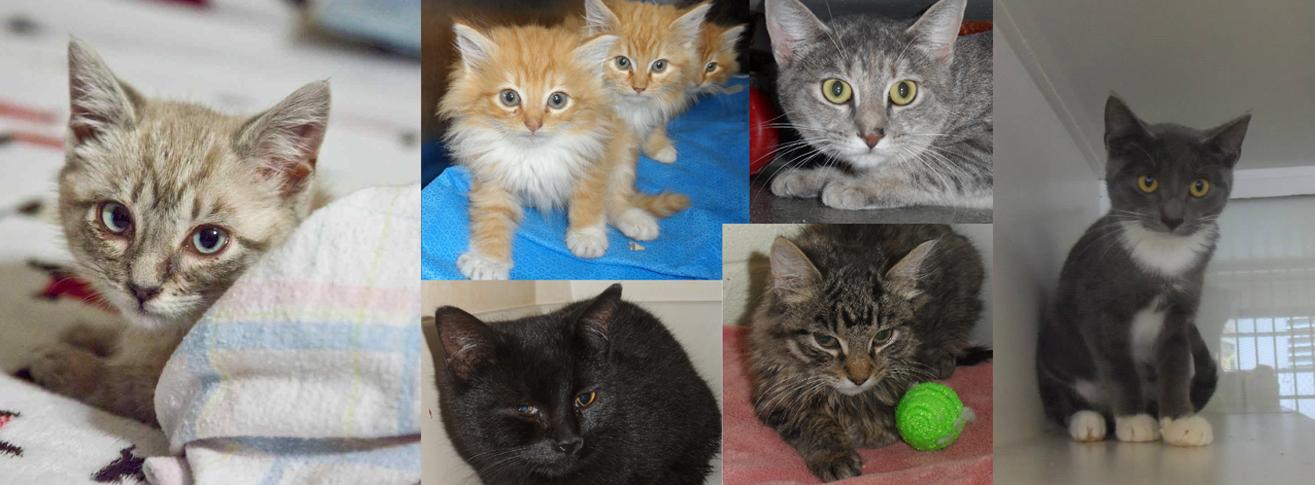Introducing a New Cat
The first step in creating harmony between your new cat and the existing cats in your household is to pick the best possible new cat for your household and lifestyle. All cats are individuals, and some may merge into your household better than others.
How do I choose a new cat to add to my household?
Cats who previously lived with another cat are more likely to get along with other cats than a cat who was an “only child.” Think about the things that the cats already in your home like to do. If they like to play, getting another playful cat is probably a good idea. If your cats prefer to lie in the sun all day, you’re probably better off adopting a cat who has similar habits. A young kitten or adolescent is probably not a good idea for a household with an older or grumpy cat.
How can I reduce the likelihood of problems?
Even if the cat you are adopting is good with other cats, there is always the possibility of problems when introducing strangers to each other. There are several steps that you can take to reduce the likelihood of problems. Before bringing your new cat home, create a separate “territory” for her. This area should be equipped with food, water, a scratching post, a litter box, access to natural sunlight, and comfortable resting places.
Your other cats should have their own separate territory. Make certain that both areas (the space for the new cat and the space for the other cats) contain multiple hiding places so the cats can easily retreat if necessary. Large cardboard boxes with holes cut in two sides make great hiding places. The second hole allows the cat to escape if cornered by another cat. The boxes will come into play once you start allowing the cats to interact directly, but it can be helpful to introduce the boxes first, so that the cats become accustomed to using them. Keep in mind that cats like to hide in high places, so remove fragile items from shelves or block access to the shelves.
Place your new cat in her space as soon as she arrives home, and spend a minimum of one hour with her (and the other cats in the household) per day. Play with them regularly and watch them closely for signs of stress or anxiety, such as hiding, aggressive behavior, decreased appetite, and/or excessive vocalization. If you see any of these signs, your cat could be suffering from stress. If the signs persist for more than several days and/or if your cat stops eating, consult with your veterinarian.
If any cat is showing mild signs of stress, give him or her time to acclimate to the new situation. If all the cats appear comfortable in their spaces, place the new cat in a different room (equipped with the same amenities) after two days, and allow your other cats to enter the new cat’s original territory. This will allow each cat to become accustomed to each other’s scent in a non-threatening way. Allow the cats to acclimate to their new areas for one day.
Here’s another way to introduce cats to each other’s scent: Cats have glands in their cheeks that produce pheromones. When your cat rubs her cheek against a wall, chair, or your leg, she produces pheromones, which are chemical substances that can help to relieve anxiety and provide information about the cat who is producing those pheromones. Exposing each cat to towels that were gently rubbed on the new cat’s cheeks may be a good way to introduce them. Some cats respond very well to a synthetic pheromone (a spray or diffuser), a product that can be bought online or in pet supply stores.
Next, you can start allowing the cats closer access to each other by placing them on either side of a closed door so that they can smell each other directly. The next step is to allow them to see each other through a baby gate or a door that is propped open two inches. If the cats are interested in each other and seem comfortable, allow them to meet. Open the door to the rooms between the cats and observe them closely.
If any cat shows signs of significant stress or aggression, separate them again and introduce them more slowly. Once the cats have acclimated to being allowed to sniff each other through a door, bring each cat into a large room, on opposite sides. If you have a willing helper, each person should play, pet and/or give food treats to one of the cats. If you do not have a helper, place the more comfortable cat in a cat carrier with a bowl of canned cat food to keep him occupied and play with the other cat. Over multiple sessions, gradually bring the cats closer to each other. This exercise teaches the cats that they get special rewards in each other’s presence, and that nothing bad is happening. With time, the cats will learn that they are not a serious threat to each other.
Remember, an anxious cat is much more likely to behave aggressively than a cat who is comfortable and relaxed. If you use patience in the initial stages of the introduction process, you will probably increase your chances of a harmonious household.
The above recommendations are guidelines to increase the likelihood that your new cat will get along with the existing cat(s) in your household. If you have tried these techniques and your cats are still not getting along, please seek the help of your veterinarian or a behaviorist.

